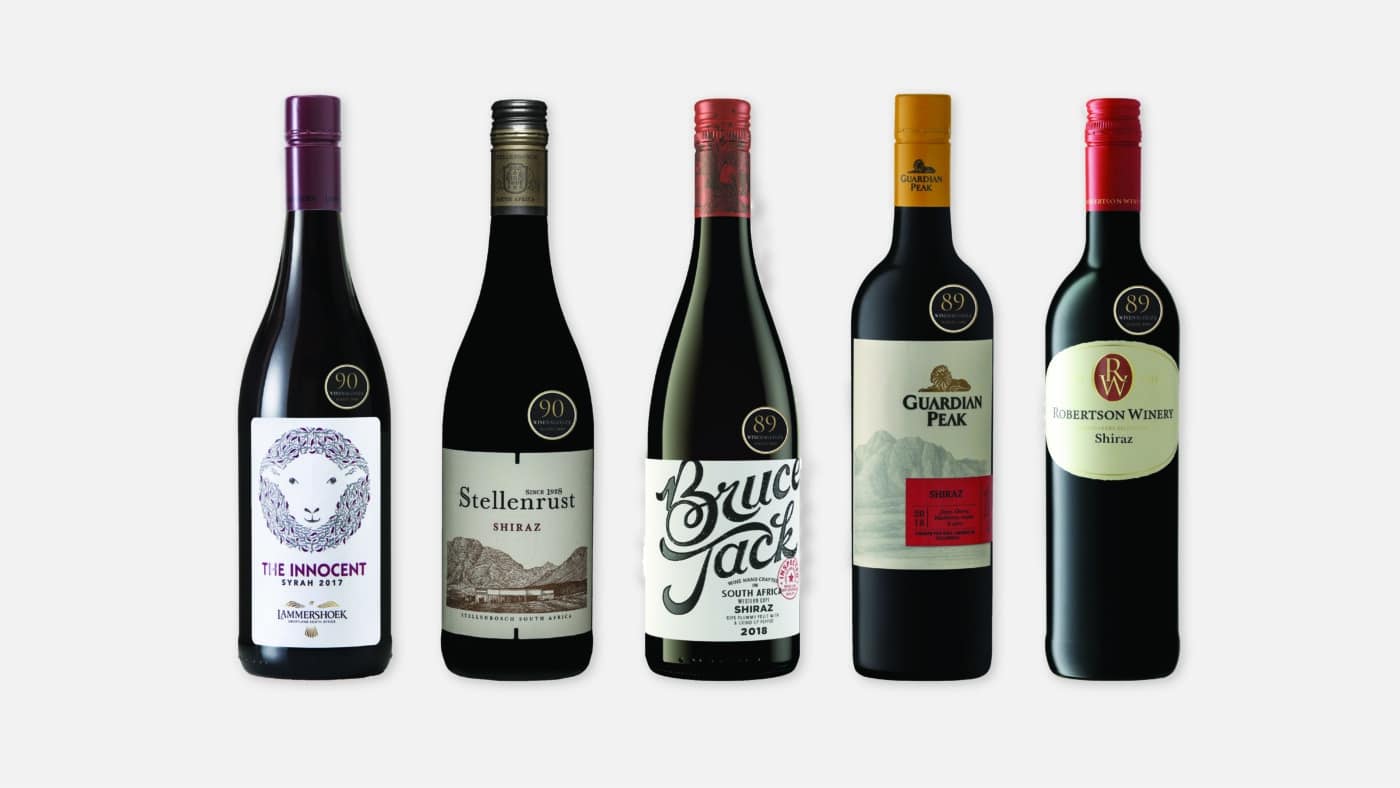Best Value Shiraz Tasting 2019 – Results
By Christian Eedes, 2 July 2019
 Results of the Best Value Shiraz Tasting aimed at finding the best examples of this variety costing between R60 and R120 a bottle are now out
Results of the Best Value Shiraz Tasting aimed at finding the best examples of this variety costing between R60 and R120 a bottle are now out
The top five wines were as follows:
1.= Lammershoek The Innocent Syrah 2017 – 90/100
1.= Stellenrust Shiraz 2017 – 90/100
3.= Bruce Jack Shiraz 2018 – 89/100
3.= Guardian Peak Shiraz 2018 – 89/100
3.= Robertson Winery Shiraz 2018 – 89/100

COMMENTARY
It’s impossible to know when Shiraz first arrived in South Africa. Some believe it was with Simon van der Stel in the late 1600s; others claim that James Busby, the ‘father’ of Australian and New Zealand wine, offloaded some cuttings here while en route to New South Wales in the 1840s. It doesn’t really matter either way given that the first record of Shiraz being planted here was only in the late 1890s (on an experimental basis at Groot Constantia). By 1978 there were still only 20 Shirazes being made, and in 1992 we still only had about 900 hectares planted.
A mere four decades later, Shiraz is South Africa’s second most widely planted red variety after Cabernet Sauvignon (fifth overall, after Chenin Blanc, Colombard, Cabernet and Sauvignon Blanc). There are almost 9,500 hectares planted, accounting for 10.2% of total land under vine. Shiraz’s rise both in terms of plantings and popularity has been nothing short of meteoric, and it’s arguably our most exciting red wine variety from a value-for-money point of view.
It’s something of a chameleon grape, capable of producing wines ranging from fairly light and fresh (even austere) to rich and ripe (even jammy). Producers often claim that their use of the name ‘Syrah’ indicates wines made in the more elegant ‘Rhone’ style rather than the blockbuster ‘Aussie’ style, but this is definitely not always the case. Generally speaking, though, South African Shiraz does sit somewhere in between the two extremes.
‘It’s the wine I always recommend to consumers who claim they like Merlot,’ said roaming chair James Pietersen, sales manager at Wine Cellar, while briefing the judges tasked with finding the best of the Best Value submissions. ‘Whether made in a lighter, fresher or darker, richer style, it generally has a soft juiciness about it, along with some spice.’
As a panel, we set out to find delicious table wines for everyday enjoyment, and on the whole we were really pleased with the quality. Perhaps expecting ‘value’ wines to be more in the ripe, extracted, Aussie mould, we were delighted to see a lot of freshness, and oak was generally well handled, allowing the inherent fruit spice to shine rather than being masked by overt mocha or vanilla flavours.
Most of the submissions were from the 2017 or 2018 vintages, clearly made with the intention of offering early drinking pleasure. However, we also had a few 2016s and 2015s – and even a 2014 that was a contender for a Top Five position. From Darling to Devon Valley, Tulbagh to Worcester, the Cape winelands were well represented, and it came as no surprise to discover that our top wine was from the Swartland, home to over a fifth of South Africa’s Shiraz vineyards.
JUDGING PROCEDURES
The wines were tasted blind by a three-person panel consisting of Joanne Gibson (freelance wine journalist and Platter’s taster, with a WSET Level 4 Diploma in Wines & Spirits), Ndaba Dube (Blaauwberg Beach Hotel F&B manager, a graduate of the Michael Fridjhon Wine Judging Academy) and Trizanne Barnard (winemaker, owner of Trizanne Signature Wines).
Scoring was done according to the 100-point quality scale, with the top-scoring wines going through to a second round of blind tasting and discussion with roaming chair James Pietersen. In other words, the final results do not merely reflect arithmetic averaging.








Comments
0 comment(s)
Please read our Comments Policy here.